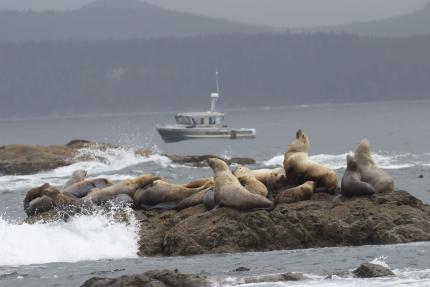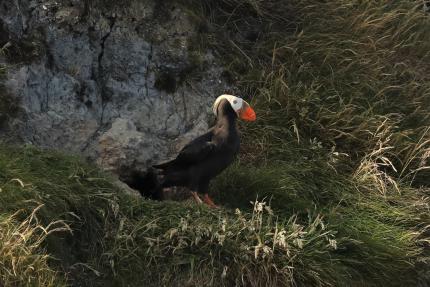
Marine birds live in Washington’s intertidal, estuarine, and pelagic environments of the Puget Sound, San Juan Archipelago, Strait of Juan de Fuca, and Washington coast. Some of these birds spend the vast majority of their lives at sea and only come to land to nest -- some even spend the first few years at sea without ever touching land.
Species like the marbled murrelet, pigeon guillemot, and harlequin duck depend on Washington’s marine environment for food -- such as forage fish and marine invertebrates -- and nest in the region. Other species are more far-flung. The tufted puffin for example, spends the winter in the deep offshore waters of the Pacific Ocean but nests in burrows on Washington’s offshore islands. Others, like the three scoter species, the grebes, and loons, over-winter here but breed in the Arctic or sub-arctic regions during the summer months. Finally, species like the Sooty Shearwater breed on islands in the southern Pacific during the Washington winter and spend their winter (our summer) off our coast foraging on squid and fish.
Washington provides critical coastal and offshore habitats and food resources. For example, over 70 species of birds are highly dependent upon the Salish Sea’s (Puget Sound and Strait of Juan de Fuca) marine environment for survival (PDF). For a number of over-wintering species, the marine environment is a place where birds come to molt (replacing their worn feathers), which is critical to flight and ultimately survival. Birds also use Washington’s marine habitats during spring-staging, a period critical to accumulate fat stores to help ensure successful breeding.
Marine bird research and monitoring
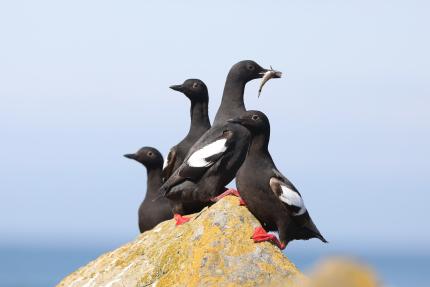
Biologists working at Washington Department of Fish and Wildlife actively monitor marine birds in collaboration with partners from universities, tribes and other agencies. They use a variety of approaches, both at-sea and on nesting colonies.
At-sea Surveys
At-sea surveys consist of:
Spring/summer Salish Sea and coastal boat surveys
WDFW staff conduct Boat-based surveys using line transect survey methodology and we have been conducted surveys in most years since 2000. This work is primarily funded by U.S. Fish and Wildlife Service with contributions from WDFW. These surveys are part of the Northwest Forest Plan Effectiveness Monitoring Program under the Northwest Forest Plan. For this effort, WDFW monitors marbled murrelet populations along coastal and Salish Sea transects between 15 May and 31 July. While surveying murrelets, we also record all other marine birds and mammals detected.
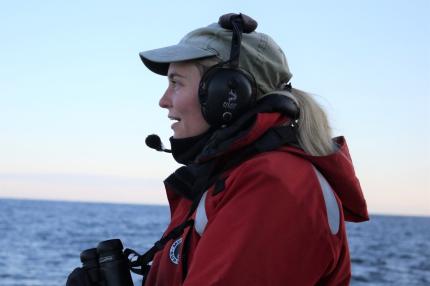
- 2012 progress report (PDF)
- 2013 progress report (PDF)
- 2014 progress report
- 2015 progress report (PDF)
- 2016 progress report (PDF)
- 2018 progress report
- 2019 progress report
- 2020 progress report
- Habitat associations of marbled murrelets (PDF)
- Regional population monitoring of the marbled murrelet: Field and analytical methods (PDF)
- Recent population decline of the marbled murrelet (PDF)
Fall through spring Salish Sea boat surveys
The Navy consults with the U.S. Fish and Wildlife Service regarding military projects, training, or testing that could potentially negatively affect the federally listed (“threatened”) marbled murrelet. The Service uses information on at-sea densities to evaluate potential impacts of various activities to the murrelet. To provide this information to the Navy, WDFW has been conducting Navy-funded surveys for the murrelet (and most other marine birds and mammals detected) in Puget Sound during the non-breeding season since 2013. This work is providing important insights into the non-breeding season abundance and distribution of murrelets and a wide-array of other species because we also record sightings of other marine birds and mammals during our surveys.
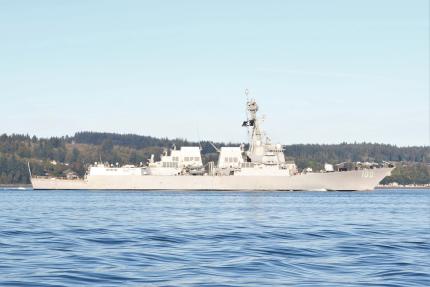
- 2014 progress report (PDF)
- 2015 progress report (PDF)
- 2016 progress report (PDF)
- 2017 progress report (PDF)
- 2018 progress report (PDF)
- 2019 progress report
- 2020 progress report
Mid-winter aerial surveys
View survey results and learn more about aerial seabird monitoring.
Spring/Summer marine bird and mammal surveys
Colony-based Surveys and Research
Many marine birds nest of offshore islands and rocks that are, for the most part, free of mammalian predators and human disturbance. In Washington, most of the important nesting colonies for seabirds are managed by the U.S. Fish and Wildlife Service’s Washington Maritime National Wildlife Refuge Complex. Working together with FWS, academics, and other partners, we cautiously work on select seabird colonies and are gaining important insights into:
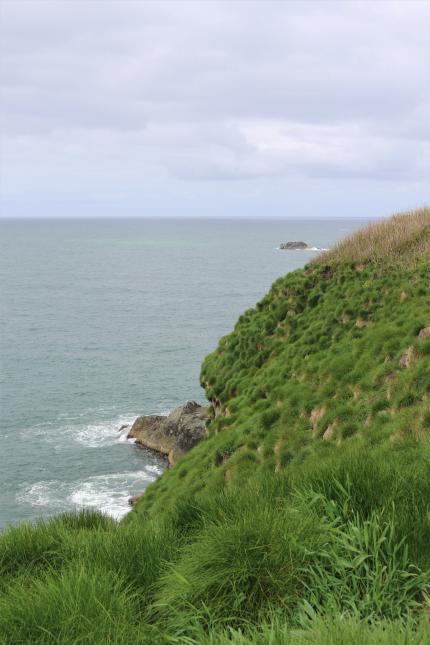
- An estimate of the size of one of the world’s largest rhinoceros auklet colonies located on Protection Island near Sequim (techniques for estimating seabird colonies)
- The influence of plastics (PDF) and toxic chemicals (PDF) on seabird diet and their tissues
- The influence of climate change and environmental conditions on seabird distribution (PDF)
Who else is keeping track of marine birds?
We also rely our citizen science partners to provide additional information on marine birds including:
- COASST – COASST is housed at the University of Washington and trains citizen scientists to gather rigorous data on marine bird mortality, marine debris, and human use of our shorelines.
- The Puget Sound Seabird Survey (PSSS) is a citizen science survey managed by Seattle Audubon that empowers volunteer birdwatchers to gather valuable data on wintering seabird populations in Puget Sound, Strait of Juan de Fuca, and waters surrounding the San Juan Islands.
- Guillemot reproduction, diet and population monitoring:
- The Puget Sound Ecosystem Monitoring Program Marine Birds work group, which is a community composed of individuals from across governmental and non-governmental organizations that meet to facilitate and enhance integrated and complementary bird population data and information on their habitats within the Salish Sea.
Vital signs
To track recovery goals for Puget Sound, the Puget Sound Partnership selected indicators of the Sound’s health including marine birds. Species include marbled murrelet, rhinoceros auklet, pigeon guillemot and scoters. Find more information on the Marine Bird Indicator and Puget Sound.
Additional resources
